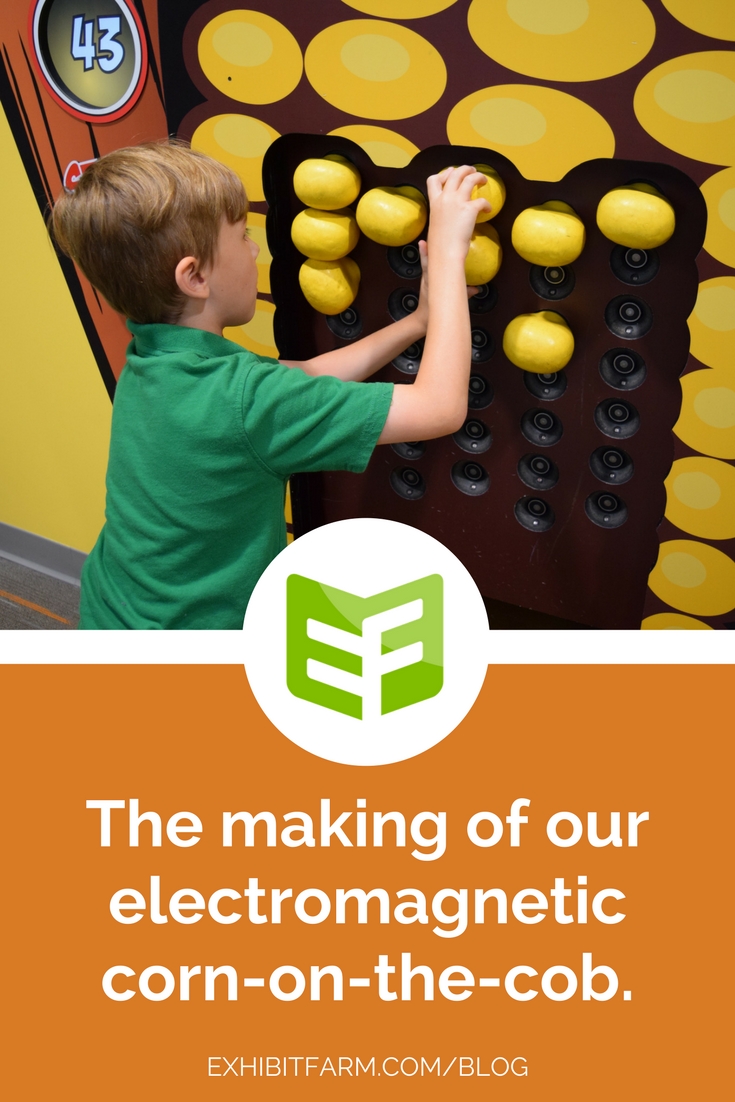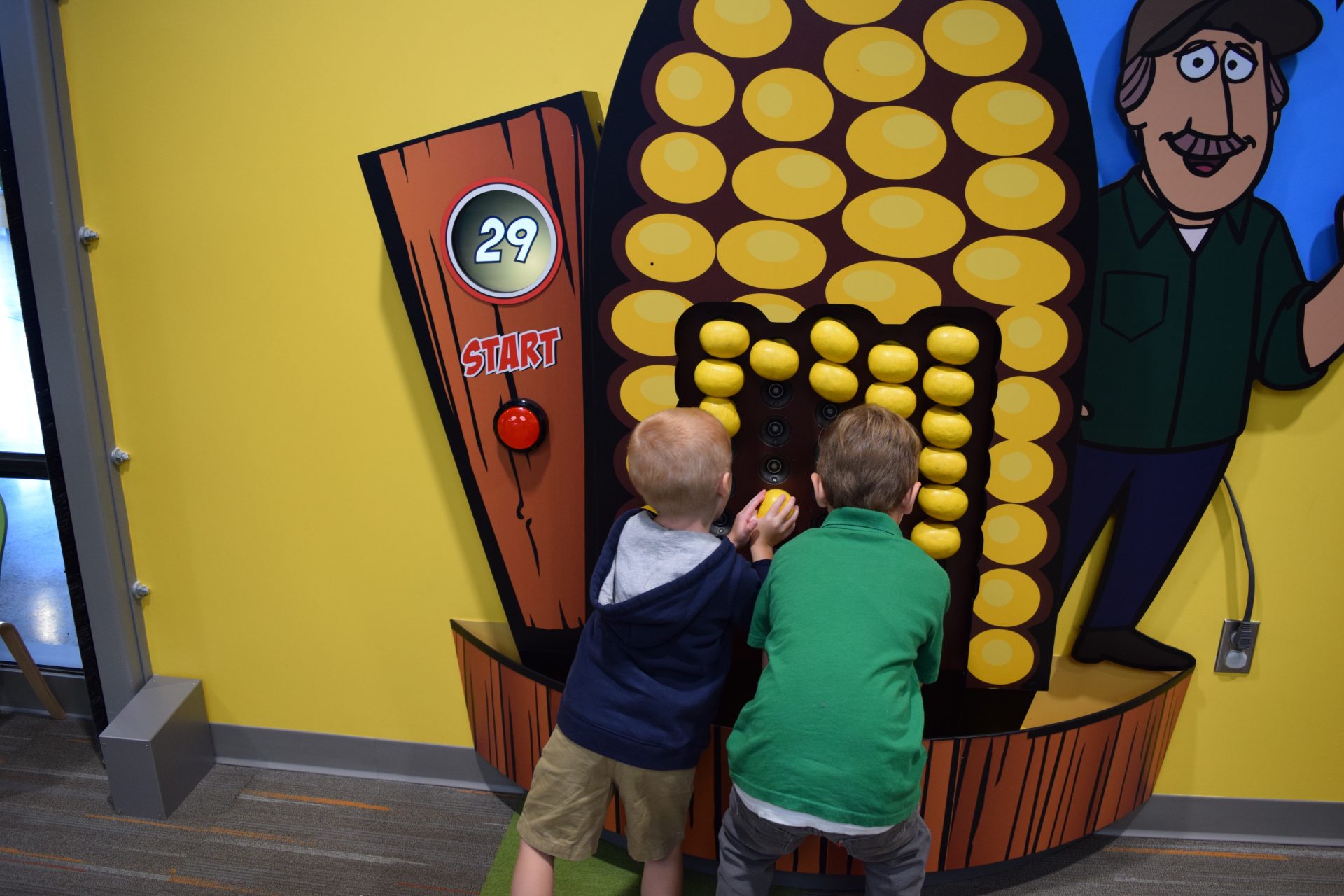This giant, cartoonish corn-on-the-cob in the kids’ section in the AgroLiquid IQhub uses electromagnetics and a count-down timer to give visitors a fun challenge. In today’s post, we’ll give you a look behind the scenes at the making of this awesome electromagnetic corn kernel game.

(You can view this agricultural exhibit on our custom products page.)
Inside an Electrified Corn Cob
The game is simple to understand. To win, players must race against the countdown timer to line up as many giant corn kernels onto the cob as they can. Once time is up, the kernels fall off of the cob, and the player has to start over again.
In order to make this possible, a lot has to go on inside of the corn kernel game unit. In the first place, there has to be a way to actually attach the fake corn kernels to the cob. Plus the unit has to be able to keep score of how each visitor does. There also has to be a way for the kernels to let go to reset the corncob game board.
Our Exhibit Farm team made this happen using a microprocessor, magnets, and a complex series of wires. One team member commented that the inside of the final product, with its hundreds of interlacing wires, looked almost like the inside of a pinball machine.
Let’s take a look.

Making an Electromagnetic Corn Kernel Game
The microprocessor acts as the “brain” of the corn kernel game. Our team programmed this microprocessor’s chip to control the electricity that goes to a series of sockets in the corncob. They wired electromagnets in these sockets to the microprocessor, which they connected to the game’s start button.
The push of the start button triggers the microprocessor to send electricity to the electromagnets in the sockets. When the electric current reaches the sockets, the electromagnets become magnetized.
Thanks to this current, the electromagnets are able to hold on to the magnetic ends of the giant kernels. These ends of the kernels have a simple metal plate that makes them magnetic. The rest of the kernel is made of molded foam coated with yellow rubber, making them lightweight and flexible.
As the players attach the kernels to the sockets, the microprocessor tracks the player’s progress using a sensor. This sensor sends the microprocessor signals that allow it to keep count of the number of slots that the player has filled with the corn kernels. That way, by the end of the game, the game’s monitor can tell the player how he did.
This same monitor shows a countdown of the time that the player has left to fill up all of the slots on the cob. Once the time is up, the microprocessor cuts off the electric current to the electromagnets one at a time, starting with the lowest rows, causing the slots to lose their magnetism. The foam kernels drop one by one into a bin below.
